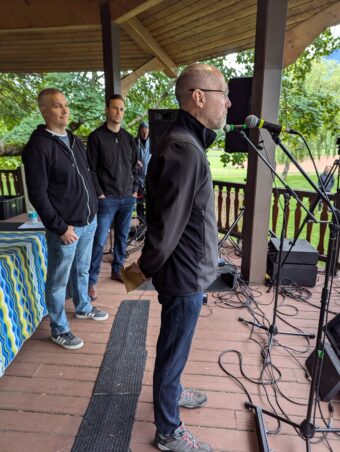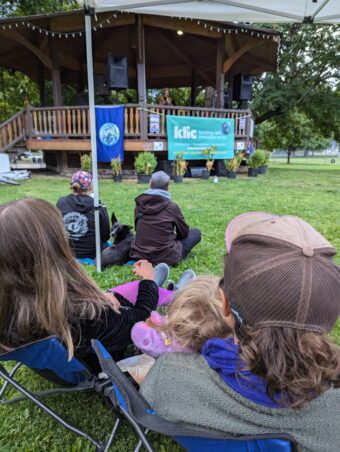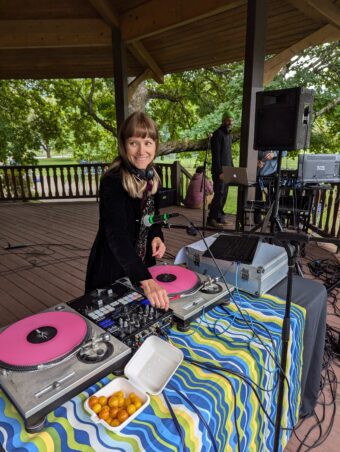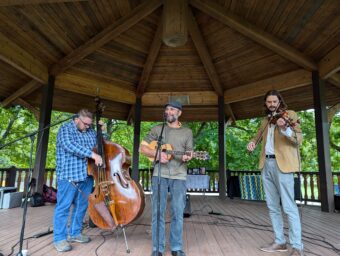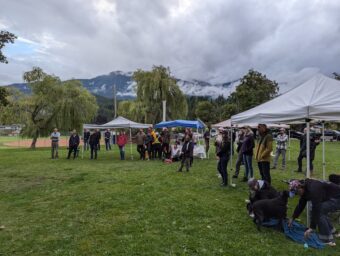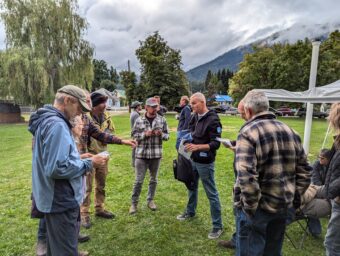A Summary of Housing Highlight Panels – August 24th, 2024, Kaslo, BC
The Kootenay Resilience Festival Housing Highlight brought together some of the brightest minds and most innovative companies in the housing and technology sectors. Set against the backdrop of the stunning Kootenay Lake, this gathering explored real-world solutions to one of the most pressing issues facing our communities today: the need for affordable, climate-resilient housing.
From pioneering technologies like 3D-printed homes to grassroots efforts building tiny home communities, the event was a showcase of what’s possible when we combine creativity, collaboration, and a shared vision for the future. As participants discussed and debated the challenges and opportunities ahead, one thing became clear—now is the time to rethink how we build, live, and support one another.
In this wrap-up article, we’ll delve into the key takeaways from the Housing Highlight, explore the companies and solutions that are leading the charge, and consider how we can scale these innovations to create hundreds of regenerative communities across the bioregion. Join us as we reflect on the inspiring ideas and actionable insights shared at this pivotal event, and chart a course for a more resilient and regenerative future.
Panel 1: Moderator – Jean-Marc La Flamme and Kootenay Lake Innovation Centre – Kaslo BC
Moderator Jean-Marc La Flamme is a visionary in the world of regenerative living and building technology, serving as leader at Geoship Homes. Geoship.is revolutionizing housing through automated homebuilding and breakthrough bioceramic materials, which mimic the properties of human bone and are both highly durable and non-toxic. The homes are fabricated locally using injection-molded components that are assembled on-site like Lego blocks, drastically reducing labor, material costs, and waste. Geoship’s climate-resilient domes are fireproof, hurricane resilient, and mold-free, built to last 500 years while reducing carbon emissions by 85% and costing 50% less than traditional homes. Through a Village Builder platform, they provide a blueprint for regenerative communities that focus on healthy living, food security, and energy decentralization. Geoship is owned by the people through equity crowdfunding, enabling local ownership of micro-factories and a dynamic, adaptable housing system. With over $100 million in sales, they are transforming housing affordability and climate resilience—one home and one village at a time, with communities starting right here in the Kootenays.
Peter Tranfo – Canadian Tiny Homes (Nelson, BC)
Canadian Tiny Homes is a family-run business specializing in the construction of custom-built tiny homes. They focus on providing affordable, energy-efficient, four-season tiny homes that use wood-frame construction. Each home is tailored to the client’s needs, featuring heat pumps for heating and cooling and an HRV system for ventilation. They were recently recognized by Tiny Homes Canada for their innovative and affordable designs.
Steve Hardy – Big Calm Tiny Homesteads (Slocan, BC)
Big Calm Tiny Homesteads is developing a permaculture-based tiny home community in the Slocan Valley. Their goal is to create fully serviced pads for tiny homes, offering an affordable, sustainable living environment that fosters resilience and a closer connection to nature. They are focusing on expanding their community to include more long-term lease pads and shared amenities like gardens, greenhouses, and trails.
Chris Hartwick – Twente Additive Manufacturing (Proctor BC)
Twente specializes in 3D concrete printing for housing and other structures. Their technology allows them to build homes quickly and affordably with significantly reduced material waste. Twente’s robots can print walls and structures, drastically reducing labor and time on-site while maintaining high levels of durability and thermal efficiency. Their pod series, with homes ranging from 550 to 2100 square feet, demonstrates the potential for rapid, cost-effective housing solutions.
Josh Hall – Spearhead (Nelson, BC)
Spearhead blends traditional timber frame craftsmanship with advanced CNC technology. They focus on delivering high-quality, custom-built projects while reducing waste through precision engineering. Spearhead is exploring the integration of their techniques into affordable housing, including community-driven projects such as rebuilding schools in fire-affected areas in the U.S. Their work also includes providing design IP to other fabricators to replicate their success on a larger scale.
Panel 2: Moderator – Mitchell Scott of Kootenay Mountain Culture Productions – Nelson BC
Mitchell Scott, a principal at KMC Productions, moderated the second panel at the Housing Highlight, bringing his deep connection to the Kootenays and passion for sustainable living into the conversation. KMC is a media company dedicated to celebrating the outdoor lifestyle, environmental stewardship, and the unique culture of mountain communities. With his work in publishing and podcasting, including the popular Headwaters Podcast, Mitchell fosters conversations around climate action, housing affordability, and community resilience. His thoughtful moderation during the panel helped to connect the insights of architects, builders, and energy experts, driving home the importance of creative, place-based solutions for tackling the housing crisis in the Kootenays and beyond.
Gabe Tyler – North Mountain Construction (Nelson, BC)
North Mountain Construction focuses on affordable housing projects in collaboration with BC Housing and Indigenous nations. They build multi-family units, homeless shelters, and other housing initiatives aimed at providing secure, affordable living for vulnerable populations. They also prioritize energy efficiency in their builds to reduce long-term operating costs.
Robert Stacey – Cover Architecture (Nelson, BC)
Cover Architecture, focuses on sustainable, energy-efficient buildings that meet current and future needs. At the Housing Highlight, he emphasized the importance of retrofitting existing buildings to reduce energy consumption and carbon footprints. His firm is working on projects like an energy retrofit of a hotel in Kamloops with BC Housing, testing scalable and cost-effective construction practices. Robert advocates for greater collaboration among architects, builders, and communities to create holistic solutions for the housing crisis in the Kootenays and beyond.
Niesz Koziol – Energy Advisor: Shoreline Building Performance (Blewett, BC)
Niesz works with homeowners to retrofit existing homes for energy efficiency. By assessing energy leaks and suggesting improvements like adding insulation, upgrading to heat pumps, and enhancing airtightness, Niche helps homeowners reduce their energy consumption and lower their long-term costs. She is also involved in helping homeowners qualify for government grants through Clean BC and the Federal Greener Homes program.
Carlos Köppen – Earthship Builder: Living Here (Slocan BC)
Carlos built his own Earthship home over five years using natural materials like earth and wood. Earthships are designed to be highly sustainable and self-sufficient, with features like passive solar heating, rainwater collection, and water recycling. Carlos emphasizes the affordability and comfort of building with natural materials, noting that his home regulates temperature efficiently and reduces the need for external energy sources.
Seth Reidy – Nelson Tiny Houses (Nelson, BC)
Nelson Tiny Houses focuses on building small, custom homes that are affordable, sustainable, and energy-efficient. Seth emphasizes the value of downsizing and living with fewer possessions to reduce both construction and operational costs. His company has been instrumental in promoting the tiny home movement in Canada, building homes that serve a wide variety of clients, including seniors and families looking to downsize.
Comments on Challenges, Collaboration, and Scaling to Hundreds of New Communities in the Bioregion
The Kootenay Resilience Festival Housing Highlight made it clear that while innovation is plentiful, there are still significant challenges to scaling these housing solutions to the level needed to truly impact affordability and sustainability in the bioregion. Here are some of the main challenges and how we can work better together to overcome them, along with strategies to scale up to hundreds of new communities:
Key Challenges Identified:
- Zoning and Regulations:
- Issue: Zoning laws and building codes remain one of the biggest obstacles to the adoption of innovative housing models like Tiny Homes, Earthships, and 3D-printed homes. Many municipalities are slow to adapt to new technologies and housing formats. The challenge with adopting alternative housing methods goes beyond local municipalities; the BC Building Code is based on the Model National Building Code, which requires changes at the national level in Ottawa. Currently, developers face added costs and complexities, such as hiring engineers and architects, to navigate these outdated regulations.
- Solution: To make sustainable housing solutions more accessible, advocacy efforts need to focus on changing the national building codes. This would eliminate unnecessary barriers and costs, allowing for broader adoption of innovative construction methods across the country. Pilot programs and “living labs” where experimental building techniques are allowed could be a key step forward in showcasing these housing models’ viability.
- Financing Difficulties:
- Issue: Securing financing for unconventional homes remains a major hurdle. Traditional banks and investors are often hesitant to fund tiny homes, 3D-printed homes, or permaculture communities because these projects do not fit neatly into existing real estate models.
- Solution: We need to mobilize alternative financing methods, such as community-supported funds, impact investment networks, and decentralized finance (DeFi) to support these projects. New private capital groups or local cooperative finance initiatives could create opportunities for collective investment in regenerative communities.
- Adoption of New Technologies:
- Issue: Although technology such as 3D concrete printing and energy-efficient building practices exist, there is resistance to adoption in the wider building industry. This reluctance stems from unfamiliarity, lack of training, and sometimes skepticism.
- Solution: Increased education and demonstration projects are essential to familiarize builders, architects, and homeowners with these technologies. Creating partnerships with educational institutions, as seen with Selkirk College’s construction programs, can help train the next generation of builders in innovative practices. Additionally, showcasing successful builds—like Twente’s 3D-printed homes or Carlos’s Earthship—helps to normalize these approaches.
- Housing Affordability vs. Customization:
- Issue: Many homeowners still seek custom-built homes, which drive up costs. There is a tension between the desire for unique homes and the need for affordable, repeatable solutions.
- Solution: Standardizing modular designs that are flexible but efficient could help reduce costs. Developing community-wide projects based on shared designs and bulk purchasing agreements for materials could help lower prices while allowing for some degree of personalization.
Strategies for Scaling to Hundreds of New Communities:
- Create Replicable Community Models:
- By establishing pilot regenerative communities that integrate food, energy, housing, and shared mobility solutions, we can develop a template that can be replicated across the bioregion. These models could be open-source, allowing others to adapt them to local conditions. Communities like Big Calm Tiny Homesteads and Geoship’s Village Builder Program are great examples of these scalable models.
- Collaborative Development Networks:
- We need to establish regional networks that bring together builders, architects, technologists, and community organizers to share resources and knowledge. By working collaboratively, these networks can achieve economies of scale, share best practices, and more effectively advocate for policy changes. Platforms like Thought Exchange can play a role in facilitating these connections.
- Innovative Financing and Ownership Structures:
- To build hundreds of new communities, we must rethink traditional ownership and financing models. Community land trusts, cooperative ownership models, and shared equity agreements can provide more flexible and affordable ways for people to own homes while participating in the development of their communities.
- Leveraging Automation for Speed and Affordability:
- As Jean-Marc La Flamme emphasized, automation holds great promise for reducing costs and speeding up the construction process. By investing in technologies like Twente’s 3D printing and modular construction techniques, we can scale up production to meet the demand for new housing quickly and efficiently.
- Holistic Community Design:
- Rather than focusing solely on housing, these new communities should integrate food production, renewable energy, and shared mobility systems. By building these elements into the community design from the start, we can reduce overall living costs and create more resilient, self-sustaining communities.
How We Can Work Better Together:
- Community Engagement: Increased community involvement through tools like Thought Exchange or Nelson’s EarthNet is essential. When communities are actively engaged in decision-making, they are more likely to support and invest in the development of new housing projects. This engagement also helps tailor solutions to meet local needs.
- Interdisciplinary Collaboration: Builders, architects, policymakers, environmental experts, and community organizers must collaborate closely to ensure that all aspects of community development—housing, food, energy, and mobility—are addressed in a cohesive and sustainable way.
- Public-Private Partnerships: By partnering with municipalities, private investors, and local businesses, we can unlock new opportunities for funding and development. Geoship’s work with municipalities on affordable housing grants serves as a model for how public-private partnerships can advance regenerative community projects.
Final MC Thoughts:
The pathway to building hundreds of new regenerative communities in the Kootenay bioregion will require bold experimentation, collaboration, and a willingness to embrace new technologies and models of living. By working together, we can create vibrant, resilient communities that address the critical challenges of housing, energy, food security, and climate change.
Jean-Marc La Flamme wrapped up the event by emphasizing the need to rethink how we live and build. He pointed out that by downsizing and embracing smaller, more efficient homes, we could unlock significant financial resources. For example, if 100 people transitioned from million-dollar homes to sub-$100,000 homes, it would free up $10 million for reinvestment in community solutions such as food production, renewable energy, and shared mobility.
He encouraged the audience to explore automation as a key factor in driving down housing costs, drawing a parallel between the automated car manufacturing of the 1960s and the potential for robotic homebuilding today. Jean-Marc urged the community to embrace these technologies and support local innovators, noting that the solutions are already here in the Kootenays.
Lastly, he called for deeper community engagement through platforms like Thought Exchange, inviting everyone to share their ideas and help shape the future of the region. He expressed optimism that with collective effort and innovation, the Kootenays could lead the way in building resilient, sustainable communities that address housing, energy, food, and mobility challenges.
SPEAKERS, SPONSORS AND VOLUNTEERS
Interested in getting involved? Putting your time, energy and support into the Kootenay Resilience Movement? Fill out our Festival Questionnaire and someone will get back to you right away.
THANK YOU TO OUR AMAZING SPONSORS!


